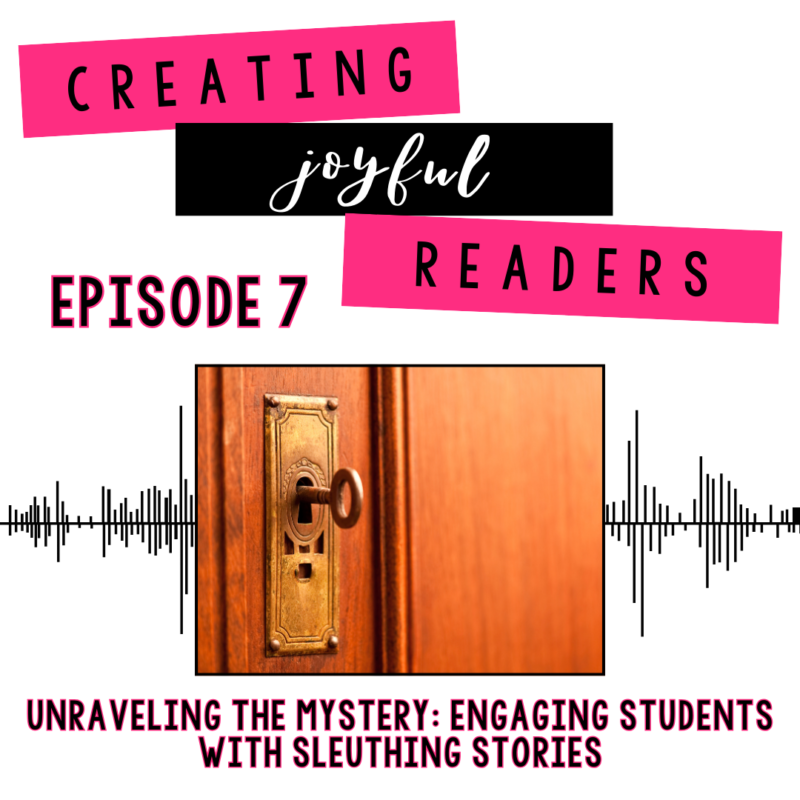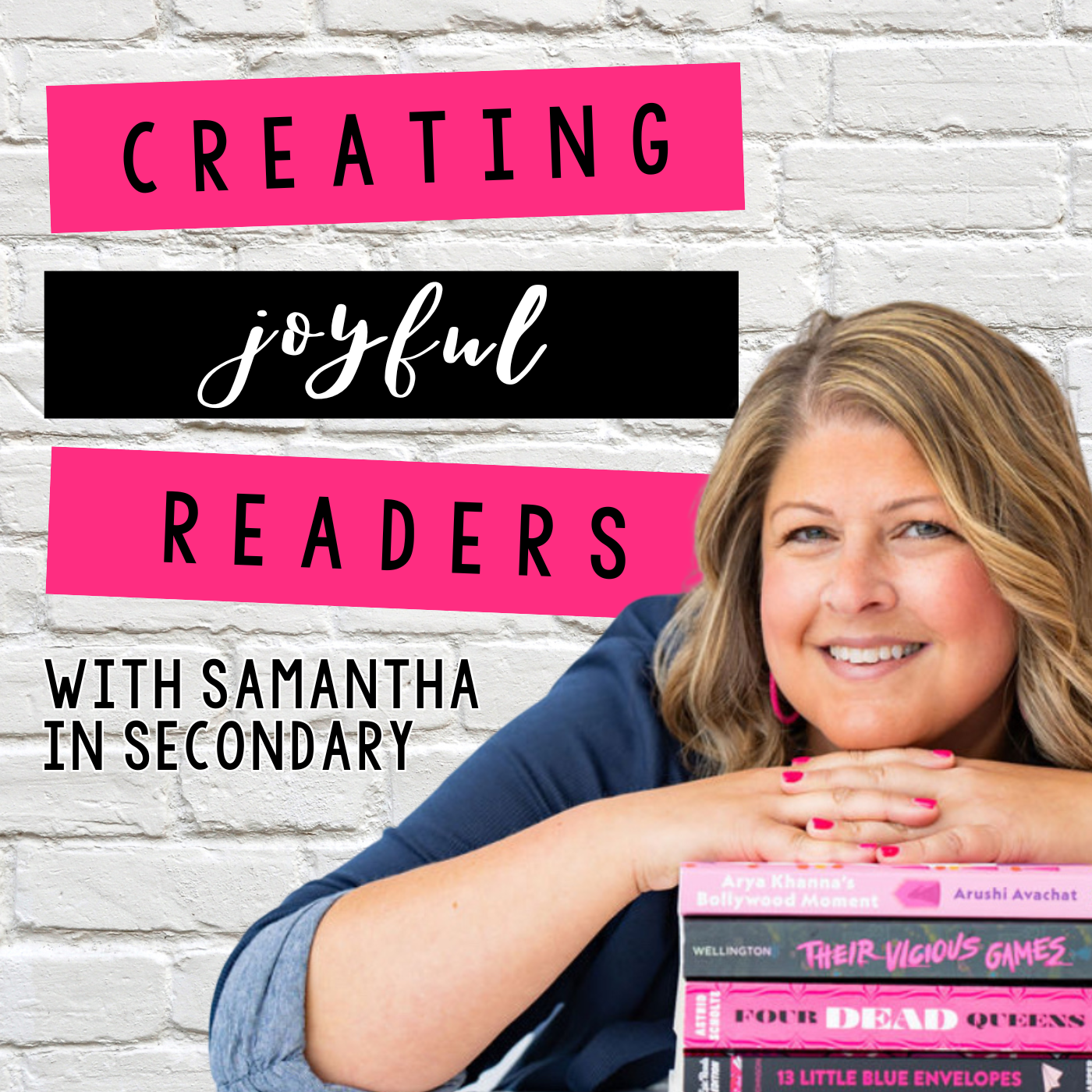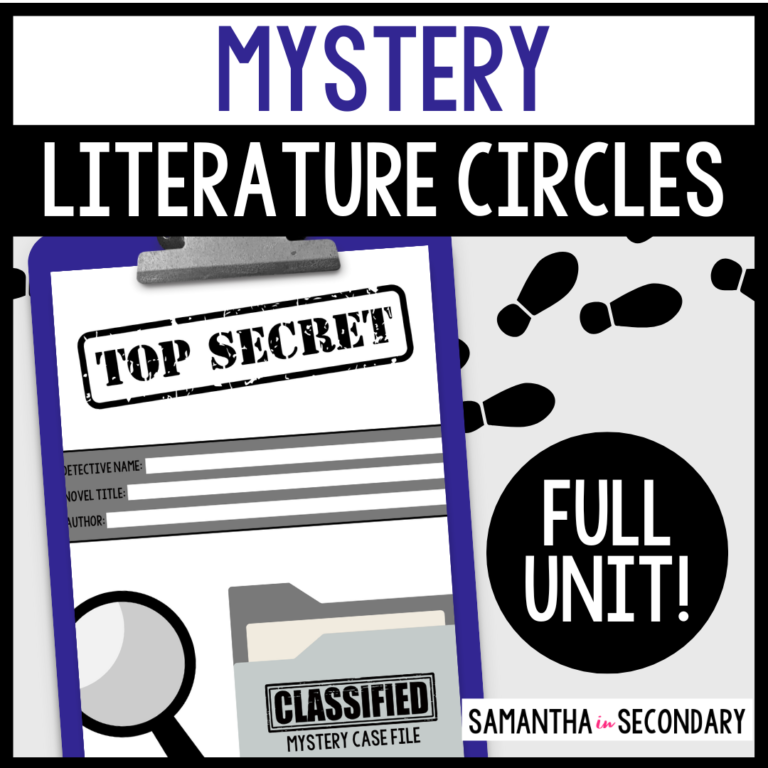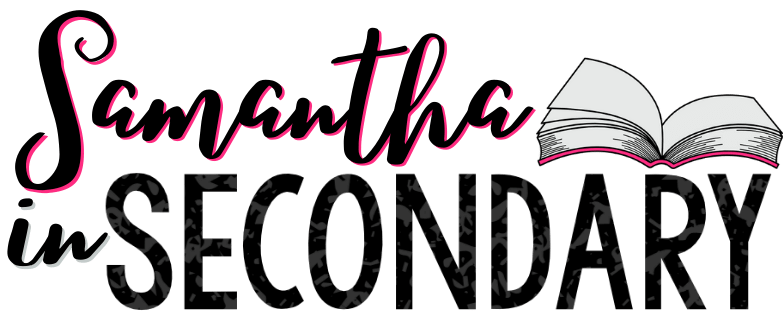Mysteries continue to dominate best-selling book lists worldwide. Huge names like James Patterson, Stephen King, Riley Sager, Freida McFadden, and so many more are consistently seen leading the charts when it comes to book sales. Why do people love this genre so much and how can we leverage that enthusiasm in the classroom? Stay tuned for today’s episode! We’re going to dig into all things mystery and discover how you can use this genre to get your students excited about reading.

Links & Resources:
Some links referenced here are affiliate links. Supporting the podcast through these links comes at no additional cost to you.
–> Take a closer look at the Mystery Genre Study Resource and the Mystery Genre Introduction Activities
–> Read more about Why Mystery Books are so Satisfying in this article by Tana French
–> Shop for your modern day literacy classroom HERE:
https://www.teacherspayteachers.com/store/samantha-in-secondary
–> For tips, book recommendations, and connection with other educators follow along on INSTAGRAM:
https://www.instagram.com/samanthainsecondary/
–> Shop my favorite YA books HERE:
Prefer to read? Open the transcript here.
Samantha 00:00
Mysteries continue to dominate best selling book lists worldwide. Huge names like James Patterson, Stephen King, Riley Sager, Frida McFadden and so many more are consistently seen leading the charts when it comes to book sales. Why do people love this genre so much, and how can we leverage that enthusiasm in the classroom? Stay tuned for today’s episode. We’re going to dig into all things mystery and discover how you can use this genre to get your students excited about reading.
Samantha 00:31
Welcome to Creating Joyful Readers, a podcast dedicated to empowering secondary educators with the tools, strategies, and inspiration to cultivate a lifelong love of reading in their students. I’m your host, Samantha. Tune in each week as we explore the transformative power of independent reading. Delve into the latest research on literacy, dissect projects that will help your students showcase what they’ve learned in a unique way, and share curated recommendations of young adult novels that will captivate and engage your learners. Join in as we embark on a journey to create joyful, lifelong readers one book at a time.
Samantha 01:09
According to author Tana French in an article written for Time Magazine, there are really two camps of mystery writing. The first is where the reader is presented with an intriguing puzzle that unfolds over the course of the text to conclude with a neatly tied bow. The second is messier. Good doesn’t always overcome evil, and maybe the author purposefully leaves some loose strings. I personally don’t love a messy ending, but many people do. These are two different types of stories that people might seek out for different reasons, and the same article, French said, we need to believe that some things can fit together and make sense, even when that seems impossible, that someday our crisis will end and will be able to leave it behind. This quote really illuminates the reason why many flock to this genre. The suspense of the story gets our adrenaline pumping, and our brains love a good puzzle to solve. But sometimes you just want to know that the bad guy goes to jail and good prevails. Other times you want to be enthralled in an all encompassing wild ride of a story, no matter which camp you fall into, mystery has something for everyone.
Samantha 02:09
I think it’s important, when we talk about the mystery genre, to know that it includes quite an array of sub genres. I’m going to break these down into six main sub genres, but it’s important to note that even these sub genres can have subgenres. You have your amateur detective, which I think is probably one of the most easily recognizable subgenres, a regular person who happens to be savvy and intelligent solves a crime. This is really fun in the young adult novels, because that person is always a teenager. Love a good teen detective. Another subgenre is the cozy mystery. This is often set in a small town and tends to be less graphic than the others in the genre. The puzzle is a favorite subgenre for many people. It’s exactly what it sounds like a problem to solve by the end of the book, using clues the author feeds you. The private detective is someone who is paid to solve a crime. Another prevalent subgenre is the police procedural shows like CSI and the NCIS continue to be extremely popular because people love to feel like they’re on the inside of an investigation. Last is the thriller, which tends to be more emotion based than others in the genre you’re exploring why people commit crimes, instead of focusing on the crime itself. Think of it as a why done it, instead of a whodunit. These types of stories often cross into other genres as well. If you view any best selling book list today, you’re bound to find quite a few psychological thrillers.
Samantha 03:28
So today, we’re going to talk about why the mystery genre is so great for the classroom. There are many different types of students who might enjoy this genre, especially because it tends to appeal to a wide range of people. Mysteries will appeal to people who love a good puzzle are naturally curious. Love a good adventure, and even students who have a strong sense of justice, mystery allows students to explore their own sense of what’s right and wrong. This is a great angle to lean into with any mystery unit or literature circle discussion. There are also plenty of reasons to love mysteries as an educator. First, they encourage students to pay attention to detail, leveraging the skill not only aligns perfectly with the Common Core standards, especially RL 1, but could also be paired with creative assignments like my mystery case file that I’ll discuss in a later episode to make classrooms more rigorous and engaging. Mysteries are the ultimate form of close reading. I know for me personally, that when I’m reading mystery, I find myself rereading a lot more than usual. I try to make sure I have a clear picture of what’s going on before I even allow myself to read the ending. This is a natural byproduct of reading a story that uses clues to build the narrative.
Samantha 04:32
So to recap, mystery is one of the best selling genres in the book industry. Students tend to enjoy the genre, and there are numerous educational benefits to studying it in your own classroom. Over the next few episodes, we’re going to explore popular mysteries and discuss which ones would make great anchor texts, which books you should consider for literature circles and some engaging project ideas to pull it all together. I’ll also dive into plenty of strategies to seamlessly implement these books into your lesson. So even if you don’t specifically want to use mysteries in your own classroom you’ll still want to tune in for the teaching tips.
Samantha 05:04
If you want to start a mystery unit in your own classroom, but don’t know where to start, I’ve got a full mystery genre based literature circle unit that can be downloaded and taught tomorrow. Just go to my shop and look for the genre based literature circles custom category on the left hand side, you’ll find all my lit circle units there. If you’re ready to go at it on your own, but just need a little support, I also have a great resource that will introduce your students to the genre, and includes a little matching game to help them get familiar with the sub genres. Search for mystery genre introduction and activities in my shop, or just head to the show notes.
Samantha 05:35
Thanks for tuning into today’s episode. My hope is that you’ve been able to gain new insight or teaching strategies that will help you create joyful readers, one student at a time. Until next episode, Happy Reading.
Samantha 05:47
Thanks for tuning in to creating joyful readers. I hope you found inspiration and practical strategies to ignite a passion for reading in your students. Remember, every book we introduce and every reading experience we foster can transform lives and help students become lifelong readers. Follow me on social media at Samantha in Secondary for more tips book recommendations and to connect with a community of educators dedicated to making reading a joyful journey until next time happy reading.

The Podcast
Creating Joyful Readers
It is possible to inspire a lifelong love of reading in secondary ELA students and that’s what the Creating Joyful Readers podcast is all about.
Join us every Monday as we dive into the latest in literacy research, talk about fresh Young Adult book recommendations, and chat fresh strategies to motivate your secondary students to love reading again.
Meet Your Host
Welcome! I’m Samantha, a veteran educator with 15 years of classroom experience and a Masters in Education, dedicated to transforming how students experience reading. My passion lies in empowering ELA teachers to foster joyful, independent readers in their classrooms.
Through this podcast, I’ll share the latest literacy research, practical tips, creative project ideas, and fresh book recommendations, all designed to help you ignite a love for reading in your students and make reading a delightful adventure, not a chore.






